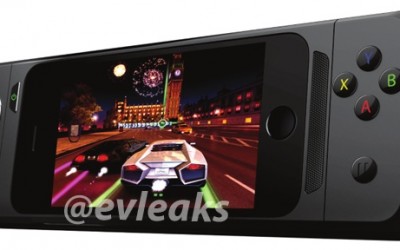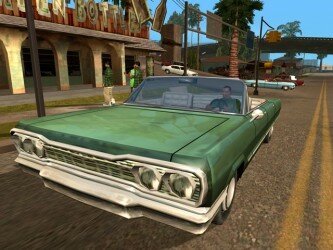Are The iPhone Game Controllers Worth It?

When the original iPhone was released, developers were faced with a new way to develop games. The only control input available was the touch screen and the gyroscope so devs had to make do with tilt and touch as the only control input and use them in smart ways for their games. From this limitation, some great games were born such as The Room 2 and Ridiculous Fishing, but iOS game devs have always wanted to be able to offer the same experience that can be found on consoles.
But a console game that would play similarly on an iPhone or iPad was not possible with only touch and tilt controls, as physical controls are an intrinsic part of the console experience. The best game developers could do was to have their games on par with console games from a graphics point of view; however, control input was always different, devs having to resort to on screen button and similar things and in the end none of them were able to match the precision of physical buttons and analog sticks.
However, iOS 7 made it seem like the era of physical controls for iOS games would start soon. This Jubne, Chris Plante from Polygon said: “Ten years from now, we may look back and say controller support was the most important announcement of E3 2013 [...] But only if Apple wants it to be“.
The first iOS game controllers have arrived, but they didn’t make any waves; in fact, not only they are not the revolution that everyone thought they will be, but they also kind of seem to miss the point of having a game controller for an iOS based device. While the potential to turn your mobile device into a mobile console is still huge, the execution is not the best and unfortunately the first iOS game controllers did not manage to tap the full potential of the concept.
The first two iOS game controllers that are available are Logitech’s Powershell and the Moga Ace Power controller. Unfortunately, they both come with a few problems that would deter potential buyers from getting one. The number one issue for most people and the first to be immediately obvious is the price of these two iOS controllers – if you want to buy an iOS game controller you will have to spend a hundred dollars (that’s a hundred dollars besides what you spent on the device itself). That is very expensive considering that if you add another thirty bucks to that hundred, you could buy a brand new handheld console, the Nintendo 2DS. Another very big problem (at least for now, until the producers make new versions) is that due to the controllers doubling as cases that wrap around your iPhone, it means you won’t be able to use these two iOS controllers with your iPad.
However, the biggest problem is represented by games. Or lack of games that support these controllers. Since the App Store was launched in 2008, it managed to gather an impressive collection of games, all based on touch controls, of course. And touch-screen games already proved they can be hits – Angry Birds became a worldwide phenomenon and indie titles such as Canabalt proved that touch based controls can make for very successful games. This is probably why most game developers don’t feel the need to implement support for iOS game controllers into their existing games or even into their upcoming games. Adam Saltsman, the dev behind Canabalt thinks that “This in turn leads to a classic chicken-and-egg problem [...] If there’s no software for the controller, who’s gonna buy it? If nobody’s buying it, who will make software for it?“.
Right now, the answer to Adam Saltsman’s question is: ports of old games. At the moment, the biggest games to include support for the iOS game controllers is Grand Theft Auto: San Andreas, a mobile port of the PlayStation 2 best selling game. It is the biggest game on the App Store (not only in terms of content) and it plays absolutely great on mobile devices with the iOS game controllers. However, Rockstar (the game’s developer) is more interested in talking about how the development team managed to get Grand Theft Auto: San Andreas to work with touch controls, than talking about how the team implemented support for the newly released iOS game controllers. The iOS port of GTA Sand Andres comes with three different touch control options, contextual buttons that are only displayed when needed and the ability to target enemies by tapping them. There was quite a lot of work involved in porting a game designed with a controller in mind, to a platform that only allows touch controls.
Other important games that offer iOS controller support are the indie hit Bastion and the award winning adventure from Telltale based on The Walking Dead franchise. However, there are no new games that support the newly released iOS game controllers. Not that there’s anything wrong with ports of existing games, especially if they are good games. But exclusives are important as the console industry shows; it is not easy selling a controller that costs $100 when all you can play are games that you can find or you’ve already played somewhere else. It is not going to be easy for iOS game controller manufacturers to convince the developers behind App Store’s most successful games to implement support for these controllers in their next game.
These developers have spent year designing games that are focused on touch controls so it’s no wonder that now they think controllers aren’t really needed for iOS based games. Trainyard developer Matt Rix says “I’m actually getting the sense that players and developers are maturing and realizing that games don’t need controllers to be good [...]“. Kepa Auwae from Rocketcat Games (developers of Punch Quest) says: “We get rare requests to add controller support [...] I’d rather just make games where the controls are designed around the platform itself“.
However, even if Logitech’s Powershell and the Moga Ace Power controller won’t manage to change the way most iOS game developers think, it doesn’t mean that iOS game controllers are destined to fail. Greg Kasavin, from Supergiant Games (the developer behind the RPG hit Bastion and the upcoming RPG Transistor) thinks that “Apple must have thought these peripherals stood a good chance of catching on since they added support for them in iOS 7 [...] And they know way more about their market than we do“. On the other hand, if the concept is going to succeed, Apple needs more than just two third party controllers.
Then again, this is Apple we are talking about, a company that is very good with marketing and selling new products. That is why we believe that all it takes to make the concept succesful is a single controller, but not any kind of controller: one made by Apple, that would receive the same marketing as Apple’s top devices. We are sure that an Apple made controller will turn a lot of heads and will make consumers and devs interested in playing and making games designed around controllers. However, if an Apple controller won’t happen and if iOS game developers won’t show a drastic change of attitutde towards controller focused games, we believe that the Logitech Powershell and the Moga Ace Power controllers won’t manage to change the state of iOS gaming. We agree with Saltsman when he says “I think they have an uphill battle ahead of them“. Not only that, but there is also the high price, which is probably the biggest factor against these iOS game controllers from the consumer’s point of view. It will be very difficult to convince people who won’t pay more than 99 cents for a game to pay 99 dollars for a controller.
What do you think about these two game controllers for the iPhone? Would you buy one, despite the high price and the fact that only a few games are compatible with them? We would like to know what you think about these controllers so leave a comment in the dedicated section below.












